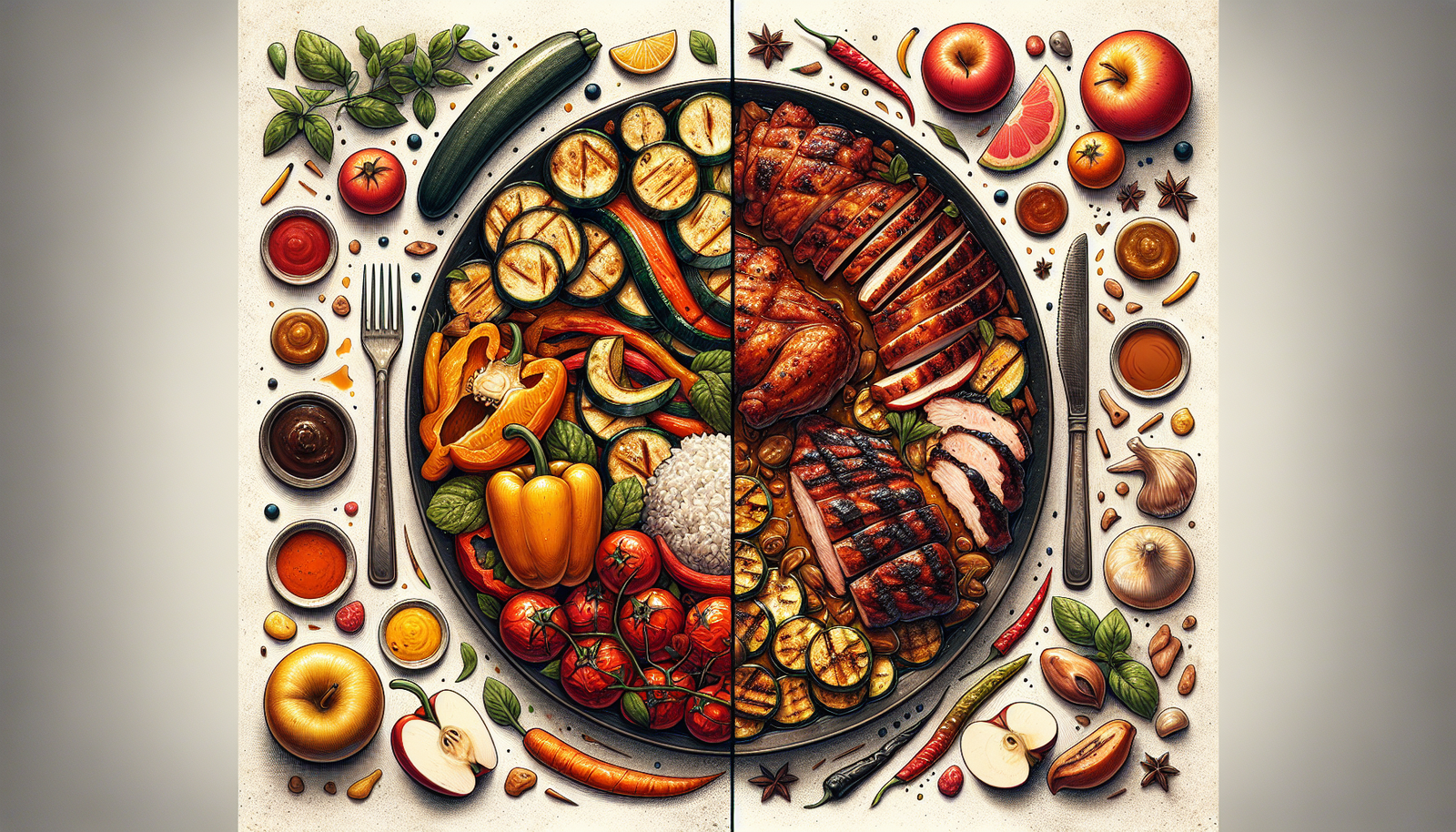
How to Season Food for a Balanced Sweet and Savory Taste?
Finding the perfect balance between sweet and savory flavors can make a dish unforgettable. This guide explains how to use seasoning techniques to achieve this balance, ensuring your meals hit the right notes of sweetness and savory depth.
The Art of Balancing Sweet and Savory
Balancing sweet and savory flavors is an art form in cooking. It involves the delicate interplay of ingredients that provide both sugary and salty notes. This balance elevates dishes, making them more complex and enjoyable. Understanding how to marry these flavors can transform ordinary meals into culinary masterpieces.
Key Ingredients for Sweetness
Sugar is the most obvious sweet ingredient, but it’s not the only option. Honey, maple syrup, and agave nectar are natural alternatives, each with distinct flavors. Fruits like apples, pears, and berries also add natural sweetness, while vanilla and cinnamon introduce aromatic notes. These ingredients can subtly enhance flavors without overpowering the dish.
Savory Elements in Dishes
Savory elements often come from ingredients high in umami or salt. Think soy sauce, miso, or parmesan cheese. Meats like bacon or ham, rich in umami, add depth to dishes. Herbs like rosemary and thyme, along with vegetables like mushrooms and garlic, contribute to the savory profile. These elements lay the foundation for a dish, providing a robust base flavor.
How These Flavors Complement Each Other
Sweet and savory flavors complement each other by creating a balanced taste experience. Sweetness can cut through the richness of savory foods, while savory notes can add depth to sweet dishes. This balance prevents any one flavor from dominating, allowing each bite to offer a complex and satisfying taste. For example, adding a touch of honey to roasted carrots enhances their natural sweetness while balancing the earthy notes.
Best Sweet and Savory Combinations
Exploring sweet and savory combinations opens up a world of culinary possibilities. These pairings can surprise the palate, offering unexpected yet delightful flavor profiles. Mastering these combinations is a skill that can turn a simple meal into an extraordinary experience.
Examples of Sweet and Savory Pairings
Some classic sweet and savory pairings include bacon and maple syrup, or cheese and fruit. Prosciutto paired with melon offers a refreshing balance, while chocolate and sea salt create an indulgent contrast. These pairings work because they combine contrasting flavors that enhance each other, creating a harmonious taste.
How to Adjust Flavors While Cooking
Adjusting flavors requires tasting and tweaking. Start with small amounts of sweetness, adding gradually until the desired balance is achieved. Similarly, introduce savory elements in stages, allowing each addition to meld with the dish. This method ensures that the balance is maintained and flavors are not overwhelming.
Using Acidity to Enhance Both Flavors
Acidity from ingredients like citrus juice or vinegar can enhance both sweet and savory flavors. A splash of lemon juice can brighten a dish, while balsamic vinegar adds depth. Acidity acts as a bridge, harmonizing sweet and savory elements, and preventing flavors from becoming cloying or overly salty.
Practical Applications in Cooking
Understanding how to balance sweet and savory flavors has practical applications in everyday cooking. Whether you’re preparing meats, baked goods, or unique dishes, mastering this balance can elevate your culinary creations, making them memorable and delicious.
Balancing Sweet and Savory in Meats
When cooking meats, sweet glazes like honey mustard can complement savory flavors. Marinating chicken in soy sauce and brown sugar can enhance its taste. Pairing pork with apples or peaches introduces a sweet contrast to the savory meat, creating a well-rounded dish.
Sweet and Savory in Baked Goods
In baking, sweet and savory combinations can add interest to traditional recipes. Think of cornbread with jalapeños or cheddar, or scones with cranberries and rosemary. These ingredients create a unique flavor profile that surprises and delights, making baked goods more complex and enjoyable.
Dishes That Highlight the Perfect Balance
Dishes like teriyaki chicken or sweet and sour pork exemplify the perfect balance of sweet and savory. Salads with fruits and nuts, topped with a tangy vinaigrette, also illustrate this harmony. These meals are not only flavorful but also showcase the artistry involved in balancing these contrasting flavors.
Conclusion
Achieving the right balance of sweet and savory flavors can make your dishes truly memorable. By using seasoning techniques that incorporate both, you can create meals that are complex and perfectly balanced. Don’t be afraid to experiment with unexpected combinations to find that perfect harmony of flavors.
FAQ
How do I balance sweet and savory ingredients?
Achieving balance between sweet and savory involves careful ingredient selection and portion control. Start by choosing complementary flavors. For example, pair sweet fruits with tangy vinegar or spicy chili. Adjust the sweetness by adding small amounts gradually, tasting as you go. This ensures neither flavor dominates.
What are good sweet ingredients to add to savory dishes?
Fruits like apples, pears, and figs work well in savory dishes. Dried fruits such as raisins and cranberries add depth, while sweeteners like honey and maple syrup offer a subtle sweetness. Explore experimenting with these ingredients to enhance the overall flavor profile of your dish.
How do I prevent sweetness from overpowering a dish?
To prevent overpowering sweetness, balance it with acidity or bitterness. Use ingredients like lemon juice, vinegar, or bitter greens. Incorporate spices such as cumin or black pepper to add complexity. Regularly taste your dish throughout the cooking process to maintain harmony.
Can I use honey in savory dishes?
Honey is a versatile sweetener in savory dishes, providing a natural sweetness and depth. Drizzle it over roasted vegetables or mix it into marinades and dressings. Use it sparingly to avoid an overly sweet flavor, enhancing rather than dominating your savory creations.
What’s the best way to add fruit to savory recipes?
Incorporate fruit by considering texture and flavor. Grilled or roasted fruits like peaches or pineapples complement meats, while fresh berries add brightness to salads. Chopped apples or pears can provide crunch in grain dishes. Experiment to find the right balance for each recipe.
What spices complement sweet and savory flavors?
Spices like cinnamon, nutmeg, and cloves enhance both sweet and savory dishes. Cardamom and allspice provide warmth and depth. For a savory twist, try adding smoked paprika or chili powder. These spices can elevate your dish, creating a balanced and flavorful experience.











